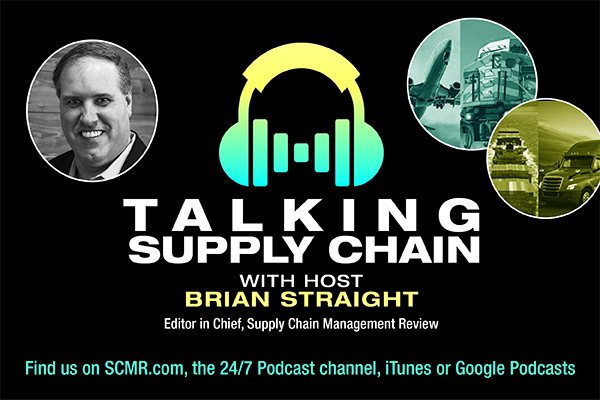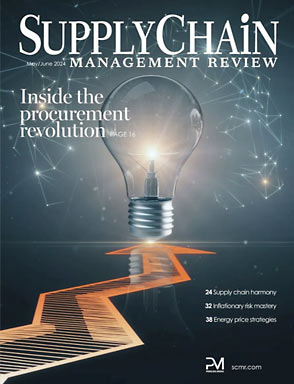Editor’s Note: Todd Miller is a principal at Sterling who focuses primarily on supply chain and logistics related investments. In this recent Q&A he addresses issues related to the burgeoning e-commerce marketplace.
Supply Chain Management Review: What are the trends in eCommerce and logistics management in 2016?
Todd Miller: E-Commerce will continue to grow exponentially with mobile taking on a more dominant role. Once retailers win the “click,” managing what happens post-click will be a game-changer in 2016. Complex, monolithic, back-end systems that take a year or more to deploy will leave retailers vulnerable, eroding profits and customer loyalty. Connecting the entire supply chain to demand a la omnichannel delivered through cloud-based distributed order management and transportation management systems and extensible solutions that intelligently integrate all inventories for best-source fulfillment will not only continue to trend, but will also set the stage for eCommerce winners and losers.
SCMR: What are the implications for warehousing?
Miller: eCommerce growth will also drive demand for higher warehouse capacity and more capital investment. Growth in warehouse capacity may be more tempered for retailers with a meaningful number of stores that can be leveraged as mini fulfillment centers to absorb the increase in eCommerce demand.
SCMR: How is logistics management evolving because of eCommerce?
Miller: eCommerce is driving significant change in logistics management due to the rise of omnichannel and rising consumer expectations on inventory availability and delivery speed. Not only do we need to improve logistics management within the fulfillment centers, but it also has to extend to the stores. Retailers need cross-chain inventory visibility to ensure products are available when consumers are shopping. This puts additional complexity on logistics management by having to understand what's in stock in the warehouse versus in-store and the best order allocation strategy. For example, do you split shipments to leverage the distribution center inventory or avoid splits and use store inventory to fill the full order?
SCMR: What about demand cycles?
Miller: Another piece of this equation is the transportation side of logistics and eCommerce. Consumers' rising expectations of faster but cheaper shipping means retailers need better transportation networks and management to decrease time in transit, while keeping their cost low enough to offer inexpensive shipping options.
SCMR: Any other concerns?
Miller: Yes. It's not only about outbound logistics. Retailers need visibility into inbound logistics so they know when a product is in route to the distribution center and its estimated arrival. This insight needs to be available and taken into consideration for planning how to get inventory from dock to stock so it's available for sale faster. With the growth of eCommerce and rising consumer expectations, we need to ensure we have the logistics management, systems, and processes in place to not only be efficient but stay competitive as well.
SCMR: Will companies be recruiting more Millennials for digitized commerce?
Miller: Absolutely. Millennials are the largest generation in the U.S. workforce, comprising one-third of working Americans. Having grown up entirely in the digital age, Millennials are perfectly suited for careers in digitized commerce. They thrive in high-tech environments and are passionate about digital innovations. They also have high expectations when it comes to their own digital shopping experiences, so they know what it takes for businesses to attract, convert, and delight customers.
SCMR: What must companies do to obtain the best talent?
Miller: To attract Millennials, companies need to look beyond basic salary and benefit compensation. Whether they're considering buying from a business or becoming an employee, Millennials care about a company's values. They expect the company they work for to be a good corporate citizen and support social causes that coincide with their beliefs. The companies that succeed in recruiting the top talent will be those that demonstrate a commitment to improving society in impactful ways.
SC
MR

More Finance
- Investor expectations influencing supply chain decision-making
- ISM reports manufacturing sees growth in March, snaps 16-month stretch of contraction
- Supply Chains Facing New Pressures as Companies Seek Cost Savings
- February retail sales see annual and sequential gains, reports Commerce and NRF
- A New Model for Retailer-Supplier Collaboration
- How to Create Real Retailer-Brand Loyalty
- More Finance
Latest Podcast

 Explore
Explore
Business Management News
- Few executives believe their supply chains can respond quickly to disruptions
- Technology’s role in mending supply chain fragility after recent disruptions
- Survey reveals strategies for addressing supply chain, logistics labor shortages
- How CPG brands can deliver on supplier diversity promises
- How S&OP provides the answer to in-demand products
- AI, virtual reality is bringing experiential learning into the modern age
- More Business Management
Latest Business Management Resources

Subscribe

Supply Chain Management Review delivers the best industry content.

Editors’ Picks





